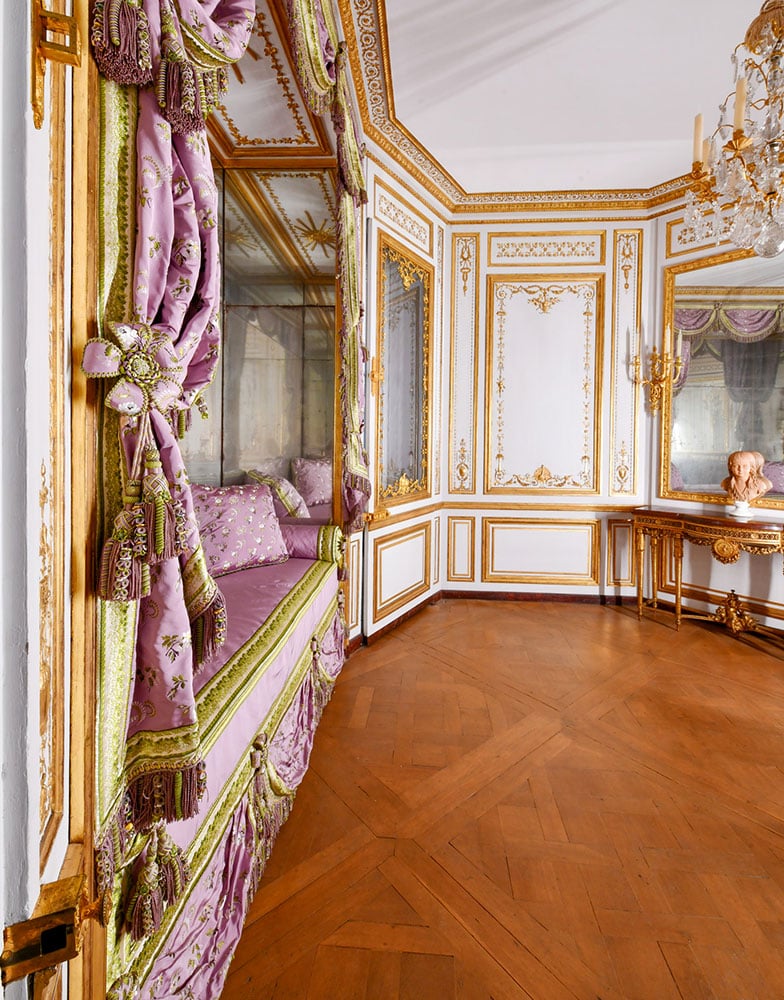Shortly after her arrival in Versailles in 1770 to marry the future king of France (at the age of 14), and especially upon assuming the throne in 1774, Marie Antoinette set about claiming the apartment at the Palace of Versailles as her personal domain, complete with several concealed chambers accessible through a secret door in her bedroom. The young queen wasted no time in adorning her newfound sanctuary with lavish furnishings befitting her royal stature.
As part of the palace’s 400th anniversary, visitors can now marvel at the sumptuous rooms that once belonged to the iconic monarch, the final stage of an extensive and meticulous five-year renovation. The private quarters have just been unveiled to the public, offering a glimpse of the hallowed spaces where Marie Antoinette spent intimate moments, playing with her children or entertaining close friends. (Such scenes were memorably imagined by the director Sofia Coppola in her 2006 biopic of the queen; however, filming took place on a soundstage in Paris.)

Méridienne Room. Photo: T. Garnier. Courtesy of Château de Versailles.
Due to a lack of historical records, recreating these rooms exactly as they existed made for a significant project. Researchers consulted plans, suppliers’ orders, and miscellaneous papers of that time to establish how the rooms might have looked. Archivists also searched for evidence of fabric hand-selected by the queen, including scraps of cloth discovered under modern renovations of sofas and chairs.
Each room tells a different story. The Méridienne Room (named after a divan lodged in a mirrored alcove) was dedicated to the birth of the royal couple’s first son. The decor of this room currently features a faithful reproduction of the original lilac-hued textile decoration, among the most precious in the palace.
The adjacent library, also restored, exhibits three-toned gilding, doors concealed by mock book jackets, and an ingenious rack and pinion system that allowed for bookshelves with adjustable height. The queen also transformed the Billiard Room—a popular game at the court—into living quarters for chambermaids and servants.

Marie Antoinette’s library. Photo: T. Garnier. Courtesy of Château de Versailles.
The Gold Room owes its name to Marie Antoinette’s fascination with ancient Egypt and Rome. She had wood paneling added in 1784, carried out by her architect, Richard MiqueRichard MiqueRichard MiqueRichard Mique, who proposed the more contemporary look using styles that had come into fashion out of the recent discovery of the remains of Pompeii and Herculaneum. Throughout this room in particular are walls covered in toile de jouy depicting pineapples, a symbol of wealth at the time, a pattern reproduced by the modern house of Pierre Frey.
Spanning two floors and overlooking a serene interior courtyard, the queen’s lavish private quarters reveal her high standards—not to mention an appreciation of her rank. Her demanding nature and never-ending refurbishments sparked the ire of Ange Jacques Gabriel, the king’s architect whose structures include the Place de la Concorde, the École Militaire, and both the Petit Trianon and opera theater on the palace’s grounds.
While the events of 1789 saw the queen’s swift exit from the palace (these rooms are said to be where she first hid during the march on Versailles), the public’s hostility toward the sovereign has since softened. Today, visitors have the extraordinary opportunity to step into the private world of Marie Antoinette and witness firsthand how the young queen lived in the last days of the Ancien Régime leading up to the French Revolution.
More Trending Stories:
A Norwegian Dad Hiking With His Family Discovered a Rock Face Covered With Bronze Age Paintings
A Gnarly Old Tooth Found in a Museum Cabinet Could Provide the Key to Understanding an Ancient Relative of the Hippo
The De Sica Family’s Storied Villa in Capri, Frequented by Artistic Luminaries From Cy Twombly to D. H. Lawrence, Has Found a Buyer
After a Memorably Botched Action Bronson Show, the Rockaway Hotel Is Offering Refunds and Reassurances About Its Arts Programming
What Would Architecture Look Like in the Virtual Realm? See Inside a New Show of Gravity-Defying, A.I.-Generated Designs
Photographer Harry Benson Captured Candid Images of the Stars, Including the Beatles and Liza Minnelli. Here Are the Stories Behind 6 of His Iconic Photos
In Pictures: A Surprising Museum Show Explores the Starring Role Seaweed—Yes, Seaweed—Plays in Classic Works of Art and Design
Lisa Schiff Questioned the Validity of Art Appraisals. Days Later, She Was Sued for Fraud











